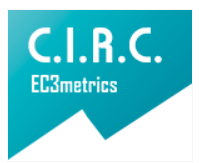Functions of the colombian audiologist in the diagnosis / evaluation of tinnitus
Funciones del Audiólogo colombiano en la evaluación del Tinnitus
Main Article Content
Tinnitus is a worldwide symptom, becoming a concern to the multidisciplinary team, especially to the audiologist due to its difficulty to diagnose. The objective of the investigation was to describe
the functions of the Colombian audiologist to determine Tinnitus. The methodology used was exploratory, through document review, surveys to audiologists and experts. The document
review was done at a national and international level which spanned across the most importanttopics such as definition, physiopathology, etiology, prevalence, and importance of the audiologist
in the process of evaluation. Seventy six Colombian audiologists responded to the survey and three specialists in the subject were interviewed. The results conclude there is a wide range
of information at an international level, but less at the national level about Tinnitus; regarding professional practice, certain evaluation processes were found which include the execution of
anamnesis, basic and advanced audiological tests, and impact of quality of life, the latter being the least implemented. According to the perspective of the experts, few audiologists focus on the
topic, and highlight the importance of training, protocol use and questionnaires that allow both the professional and user to make decisions to guide treatment.
Keywords: Tinnitus, audiologhy, audiological procedures, audiological evaluation.
Publication Facts
Reviewer profiles N/A
Author statements
Indexed in
- Academic society
- Bogotá: Corporación Universitaria Iberoamericana
- Publisher
- Bogotá: Corporación Universitaria Iberoamericana
Article Details
Alvo A. y Nazar R. (2010). Aproximación inicial para el diagnóstico y manejo del paciente con tinnitus. Revista Hospital Clínica Universidad
de Chile. Págs 223 – 231.
American Tinnitus Association. (2015). Understanding the Facts. Recuperado en: https://www.ata.org/understanding-facts/causes
Baguley D., Andersson G., McFerran D. y Mc-Kenna L. (2013). Tinnitus. A multidisciplinary approach. Second Edition. Southern Gate,
Chichester, UK. A John Wiley & Sons, Ltd.,Publication.
Bogdan, R. C. y Biklen, S. K. (2003). QualitativeResearch for Education: An introduction to Theories and Methods (4th ed.). New York:
Pearson Education group.
Cohen, M., Freundlich, O. y Ramirez, C. (2009).Enfrentamiento Multidisciplinario del Tinnitus.REV. MED. CLIN. CONDES; 20(4) 500-504.
Dong-Kee Kim; Shi-Nae Park; Hyung Min Kim; Hye Rim Son; Nam-Gyun Kim; Kyoung-HoPark; Sang Won (2011). Prevalence and Significance
of High-Frequency Hearing Loss in Subjectively Normal-Hearing PatientsWith Tinnitus Annals of Otologyrhinology&Laryngology
l20(8): 523-528.
Gutiérrez, C., Neira, L., Martínez, M., Olave, D.,Sierra, S. y Soler, L. (2010). Descripción de otoemisiones acústicas en pacientes con
sensibilidad auditiva entre 0 y 30 dB nHLcon Acúfenos. Corporación Universitaria Iberoamericana.
Greimel, K.Y., Leibetseder, M., Unterrainer, J.y Albegger, K. (1999) 1st Tinnitus meBbar?Methoden zur Erfassung tinnitusspezifischer
Beeintdichtigungen und Prasentation desTinnitus-Beeintrachtigungs-Fragebogens (TBF-12). HNO 47:196-201.
Henry J., Dennis K. y Schechter M. (2008). General Review of Tinnitus: Prevalence, Mechanisms,Effects, and Management. Journal of Speech,
Language, and Hearing Research. Vol. 481204–1235. October. In thepublicdomain 1092-4388/05/4805-1204.
Henry, J., Zaugg T., Myers, P. y Kendall C. (2005).Progresive Tinnitus Management. Clinical Handbook for Audiologists.
Henry, J., Schechter, M., Zaugg, T. y Myers, P.(2008). Progressive Audiologic Tinnitus Management.Recuperado el 2 de diciembre de
, de http://leader.pubs.asha.org/article.aspx?articleid=2289750
Hernández, R. Fernández, C. y Baptista, P. (2010).Metodología de la investigación. Editorial McGraw Hill. México.
López, M., Jiménez, A. y Ortega, E. (2010). Protocolos para acúfenos en Otorrinolaringología basado en la “Guía abreviada de acúfenos” y
en la Ponencia “Acúfeno como señal de malestar”.ISBN: 978-84-693-7376-7 CC 2010.Sevilla, Andalucía, España. Recuperado en;
http://www.saeia.es/publicaciones/pdf/protocolos_acufenos.pdf
Newman, C.W., Jacobson, G.P.y Spitzer, J.B.(1996). Development of the Tinnitus.Refaie, A., Davis A., Kayan A., Baskill J., Lovell
E. y Owen V. (2004). A questionnaire study of the quality of life and quality of family life of individuals complaining of tinnitus pre- and postattendance
at a tinnitus clinic. Nottingham, UK.
Rivas, J. y Ariza, H. (2007). Tratado de otología y audiología: diagnóstico y tratamiento médico quirúrgico. Editorial AMOLCA, Bogotá,
Colombia.
Stach, B. (2010) Clinical Audiology: An Introduction.Second Edition. Delmar, Cengage Learning. USA.









